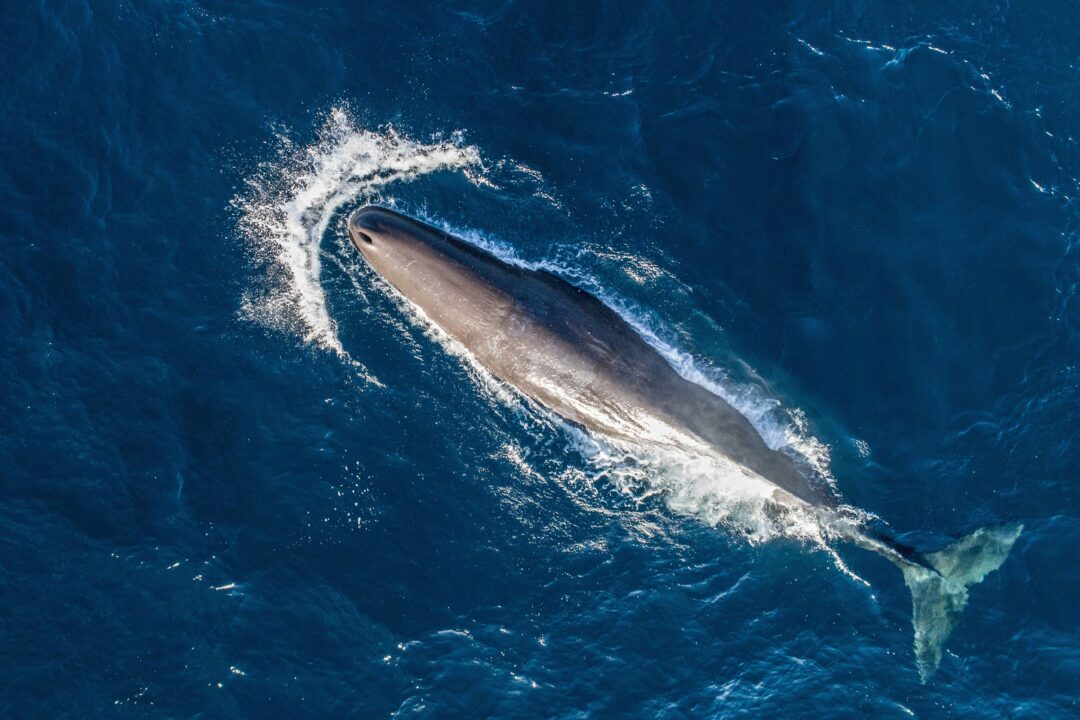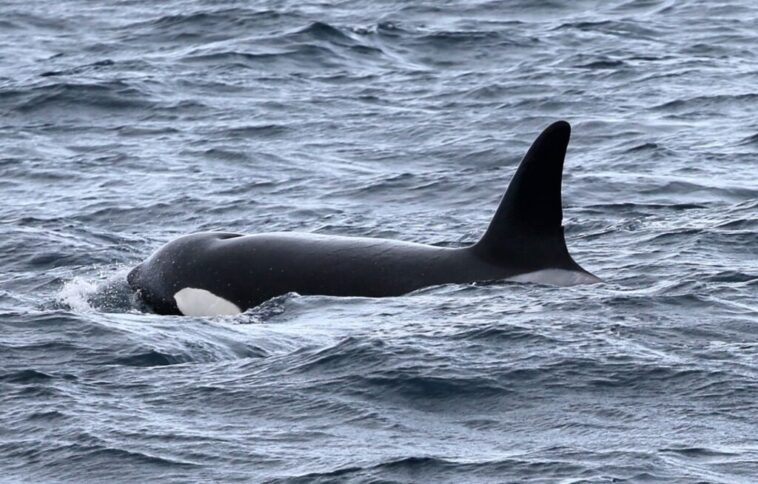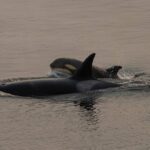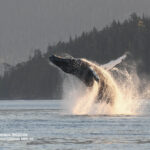BC researchers believe they have found a new population of open-ocean orcas who are hunting some of the biggest predators in the sea. University of British Columbia scientists published a new study in Aquatic Mammals that found that a unique group of 49 orcas were hunting marine mammals like sperm whales and sea turtles off the coast of Oregon and California.
“It is the first time killer whales have been reported to attack sperm whales on the west coast.”
Josh McInnes, lead author and masters student at UBC Institute for the Oceans and Fisheries
The paper contained evidence documenting this previously unknown pod of orcas from 1997 to 2021, including an incident in which the whales had been seen attacking a herd of nine female sperm whales.
“It is the first time killer whales have been reported to attack sperm whales on the west coast,” Josh McInnes, lead author and masters student at UBC Institute for the Oceans and Fisheries, said in a news release. “Other encounters include an attack on a pygmy sperm whale, predation on a northern elephant seal and Risso’s dolphin, and what appeared to be a post-meal lull after scavenging a leatherback turtle.”

“It’s pretty unique to find a new population. It takes a long time to gather photos and observations to recognize that there’s something different about these killer whales,” added co-author and UBC professor Dr. Andrew Trites.
Scientists said these orcas are identifiable by their pronounced “cookiecutter shark bite scars” – a clue that they are hunting far offshore and likely living in the deep waters of the open ocean. They also had distinct physical features, including varied shapes of dorsal fins and differently coloured saddle patches (the gray region behind the dorsal fin).
“The shape of their fins varied, from pointed like transients to rounded like offshore killer whales.”
Josh McInnes, lead author and masters student at UBC Institute for the Oceans and Fisheries
The three known types of killer whales include residents, who have rounded fins, open saddle patches, eat mainly salmon, and are the most common spotted off of BC’s coast; transients or Bigg’s killer whales, who have pointed fins, gray saddle patches, and eat mammals like seals; and offshore orcas, who have rounded fins and closed saddle patches, hunt sharks and large fish, and travel in the open ocean. The unknown orcas would be a wholly new group distinct from the three main types.
“The shape of their fins varied, from pointed like transients to rounded like offshore killer whales,” McInnes explained about the new orcas. “Their saddle patch patterns also differed, with some having large uniformly gray saddle patches and others having smooth narrow saddle patches similar to those seen in killer whales in tropical regions.”
Josh McInnes, lead author and masters student at UBC Institute for the Oceans and Fisheries
“We’re just kind of at the tip of the iceberg of what these whales are doing.”
The data for the unknown orcas study came from marine mammal stock assessment surveys, an open-ocean birding expedition and even a whale-watching tour. Researchers said that fishers had taken to documenting this unique pod and sharing their findings with the team. They will continue to collaborate with seafarers and citizen scientists to learn more about what makes these orcas distinct, which includes collecting more photos, acoustic surveys, and even DNA samples.
“We’re just kind of at the tip of the iceberg of what these whales are doing,” said McInnes to The Northern Review. “I mean, are they all one population? Are they multiple? We don’t know. So, I feel like this is kind of the big start of the next steps in our research, and to maybe get more sightings and more information,” he commented.




